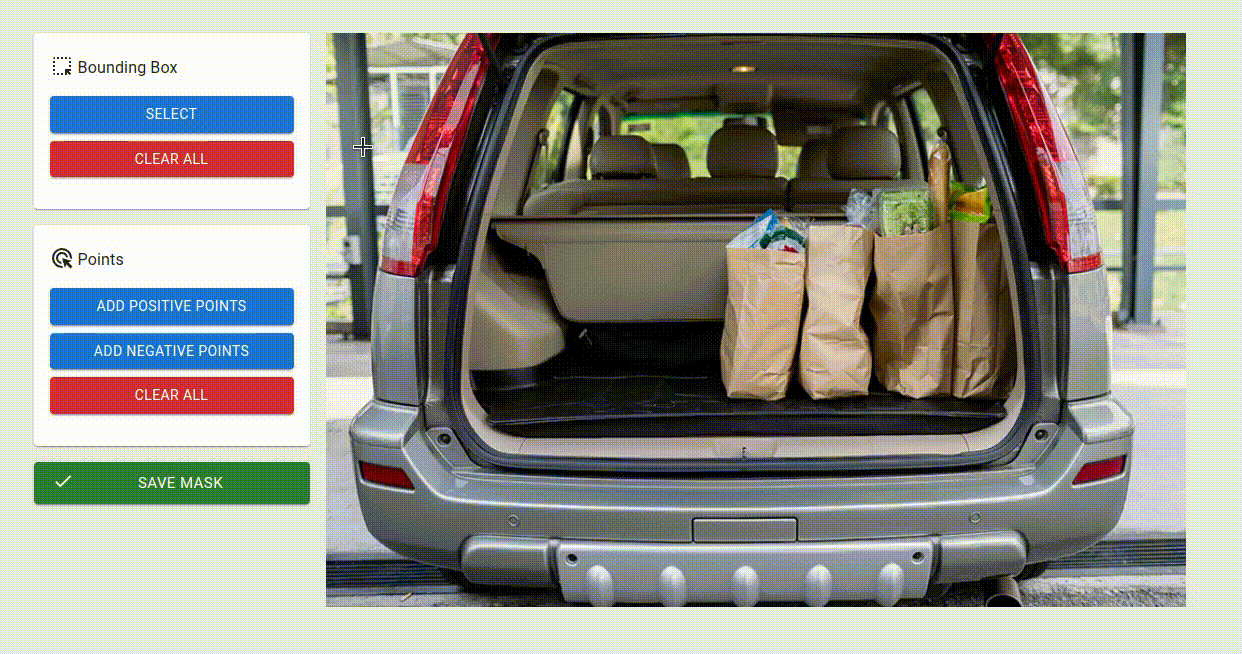React component for interfacing with Meta's Segment Anything Model (SAM)
-
Ensure that you have React 17 or later installed (MUI V5 requires React 17 or 18)
-
Install Peer Dependencies (Material UI V5)
npm install @mui/material @mui/icons-material- Install react-segment-anything
npm install react-segment-anythingSee usage example here
import React, { useState, useEffect } from 'react';
import { Tensor } from "onnxruntime-web";
/* @ts-ignore */
import npyjs from "npyjs";
import Container from '@mui/material/Container';
import { SegmentAnything } from 'react-segment-anything';
const ort = require("onnxruntime-web");
const IMAGE_EMBEDDING = "/groceries_embedding.npy";
const IMAGE_PATH = "/groceries.jpg";
const MODEL_URL = "/sam_onnx_quantized_example.onnx";
const DemoApp = () => {
const [image, setImage] = useState<HTMLImageElement | undefined>(undefined);
const loadImage = async (imageFile: string) => {
const img = new Image();
img.src = imageFile;
img.onload = () => setImage(img);
};
const [tensor, setTensor] = useState<Tensor | null>(null);
const loadNpyTensor = async (tensorFile: string, dType: string) => {
let npLoader = new npyjs();
const npArray = await npLoader.load(tensorFile);
const tensor = new ort.Tensor(dType, npArray.data, npArray.shape);
return tensor;
};
useEffect(() => {
Promise.resolve(loadNpyTensor(IMAGE_EMBEDDING, "float32")).then(
(embedding) => setTensor(embedding)
);
Promise.resolve(loadImage(IMAGE_PATH));
}, []);
if (!image || !tensor) return <div>Loading...</div>;
return (
<Container maxWidth="lg" sx={{mt: '40px'}}>
<SegmentAnything
handleMaskSaved={() => {}}
image={image}
embedding={tensor}
modelUrl=MODEL_URL
/>
</Container>
);
}

